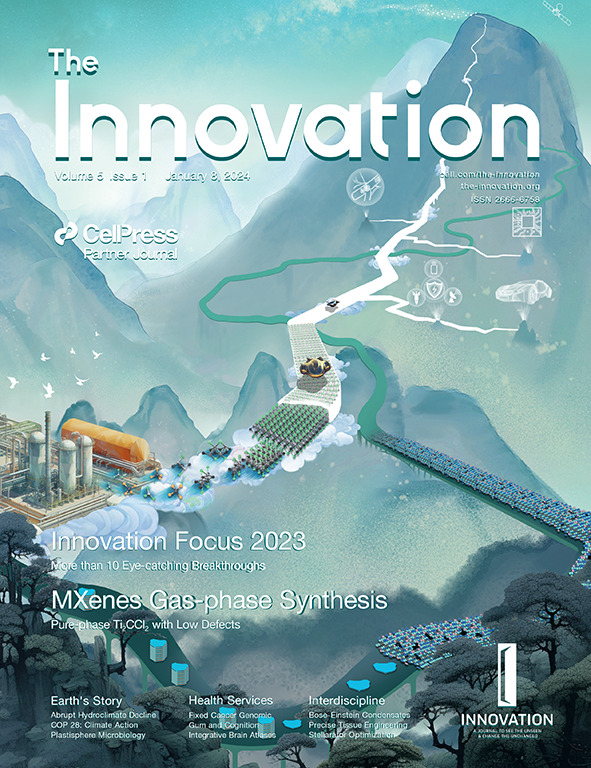Artificial intelligence for geoscience: Progress, challenges, and perspectives
IF 33.2
1区 综合性期刊
Q1 MULTIDISCIPLINARY SCIENCES
引用次数: 0
Abstract
This paper explores the evolution of geoscientific inquiry, tracing the progression from traditional physics-based models to modern data-driven approaches facilitated by significant advancements in artificial intelligence (AI) and data collection techniques. Traditional models, which are grounded in physical and numerical frameworks, provide robust explanations by explicitly reconstructing underlying physical processes. However, their limitations in comprehensively capturing Earth’s complexities and uncertainties pose challenges in optimization and real-world applicability. In contrast, contemporary data-driven models, particularly those utilizing machine learning (ML) and deep learning (DL), leverage extensive geoscience data to glean insights without requiring exhaustive theoretical knowledge. ML techniques have shown promise in addressing Earth science-related questions. Nevertheless, challenges such as data scarcity, computational demands, data privacy concerns, and the “black-box” nature of AI models hinder their seamless integration into geoscience. The integration of physics-based and data-driven methodologies into hybrid models presents an alternative paradigm. These models, which incorporate domain knowledge to guide AI methodologies, demonstrate enhanced efficiency and performance with reduced training data requirements. This review provides a comprehensive overview of geoscientific research paradigms, emphasizing untapped opportunities at the intersection of advanced AI techniques and geoscience. It examines major methodologies, showcases advances in large-scale models, and discusses the challenges and prospects that will shape the future landscape of AI in geoscience. The paper outlines a dynamic field ripe with possibilities, poised to unlock new understandings of Earth’s complexities and further advance geoscience exploration.用于地球科学的人工智能:进展、挑战和前景
本文探讨了地球科学探究的演变过程,追溯了从传统的物理模型到现代数据驱动方法的发展过程,而人工智能(AI)和数据收集技术的显著进步则为这一过程提供了便利。传统模型以物理和数值框架为基础,通过明确重建潜在的物理过程来提供可靠的解释。然而,它们在全面捕捉地球的复杂性和不确定性方面存在局限性,给优化和实际应用带来了挑战。相比之下,当代的数据驱动模型,特别是那些利用机器学习(ML)和深度学习(DL)的模型,可以利用广泛的地球科学数据来获得洞察力,而无需详尽的理论知识。ML 技术在解决地球科学相关问题方面已显示出前景。然而,数据稀缺、计算需求、数据隐私问题以及人工智能模型的 "黑箱 "性质等挑战阻碍了它们与地球科学的无缝整合。将基于物理和数据驱动的方法整合到混合模型中提供了另一种模式。这些模型结合了领域知识来指导人工智能方法,在降低训练数据要求的同时,提高了效率和性能。本综述全面概述了地球科学研究范式,强调了先进人工智能技术与地球科学交叉领域尚未开发的机遇。它探讨了主要方法,展示了大规模模型的进展,并讨论了将塑造人工智能在地球科学领域未来格局的挑战和前景。论文概述了一个充满活力、充满可能性的领域,它将开启人们对地球复杂性的新认识,并进一步推动地球科学的探索。
本文章由计算机程序翻译,如有差异,请以英文原文为准。
求助全文
约1分钟内获得全文
求助全文
来源期刊

The Innovation
MULTIDISCIPLINARY SCIENCES-
CiteScore
38.30
自引率
1.20%
发文量
134
审稿时长
6 weeks
期刊介绍:
The Innovation is an interdisciplinary journal that aims to promote scientific application. It publishes cutting-edge research and high-quality reviews in various scientific disciplines, including physics, chemistry, materials, nanotechnology, biology, translational medicine, geoscience, and engineering. The journal adheres to the peer review and publishing standards of Cell Press journals.
The Innovation is committed to serving scientists and the public. It aims to publish significant advances promptly and provides a transparent exchange platform. The journal also strives to efficiently promote the translation from scientific discovery to technological achievements and rapidly disseminate scientific findings worldwide.
Indexed in the following databases, The Innovation has visibility in Scopus, Directory of Open Access Journals (DOAJ), Web of Science, Emerging Sources Citation Index (ESCI), PubMed Central, Compendex (previously Ei index), INSPEC, and CABI A&I.
 求助内容:
求助内容: 应助结果提醒方式:
应助结果提醒方式:


